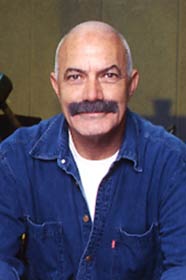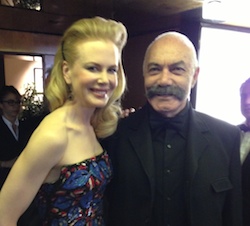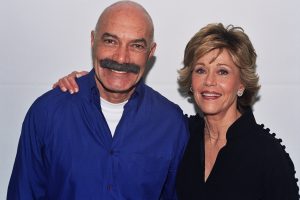A salute to the Merchant Marine, Action in the North Atlantic (aka as Heroes Without Uniforms) was a sporadically intriguing account of the heroic sailors riding “floating firecrackers” across the Atlantic, battling enemy submarines and seeing that the cargo and war material got through.
Produced by Jerry Wald, it was directed by Lloyd Bacon (and others, uncredited), starring Humphrey Bogart and Raymond Massey as sailors in the U.S. Merchant Marine during World War II.
Typical of other films in the era, Action in the North Atlantic was created as a morale boosting propaganda film.
Grade: B- (**1/2* out of *****)
| Action in the North Atlantic | |
|---|---|

Theatrical release poster
|
|
Bogart, a World War I seaman and an avid recreational sailor, stars as First Officer Joe Rossi who, along with his captain (Raymond Massey), matches tactics with U-boats and the Luftwaffe.
This WWII tribute to the Merchant Marines is an action-filled voyage of a besieged freighter, showing how the role of these men supplying the war effort was the lifeblood of democracy’s arsenal.
Bogart’s performance wasn’t up to the level of his work in the Oscar-winning “Casablanca,” which was released the same year. But the movie was sold as an actioner, with explosive action and spectacular effects, as well as a Bogart star vehicle.
When the movie premiered in New York, the Merchant Marine Band, 17 torpedoed seamen and 300 sailors marched into the theater and presented studio head Jack L. Warner with the service’s Victory flag, the first war kudo awarded to a Hollywood leader.
The movie’s tactics were so much on target, that it became a Merchant Marine training film.
Detailed Synopsis:
An American oil tanker, the SS Northern Star, captained by Capt. Steve Jarvis (Massey), is sunk in the North Atlantic Ocean by German U-boat U-37. Along with the First Officer, his friend Joe Rossi (Bogart), they make it to a lifeboat loaded with crewmen. When the U-Boat crew starts filming their plight, they respond with defiant gestures, and their lifeboat is rammed; the survivors swim to a raft and are rescued after 11 days adrift.
During their brief liberty, Steve spends time with his wife Sarah, while Joe meets and marries singer Pearl O’Neill. Meanwhile, merchant seamen, including the Northern Star survivors, spend their time waiting to be assigned to a new ship.
Over a round of poker, Johnnie Pulaski jokes about getting a shore job, and when pressed, he reveals his fear of dying at sea. The others shame him into signing along with them on another ship.
Initially, the film was to star Edward G. Robinson and George Raft, But Robinson had to drop out to do Destroyer at Columbia and was replaced by Raymond Massey. Raft was put into Background to Danger and was replaced by Bogart.
War restrictions did not permit filming at sea, so the feature was shot entirely on Warner sound stages and back lots.
Director Lloyd Bacon’s contract with Warner expired during production. Jack L. Warner wanted to wait until the film was finished before signing a new contract, but Bacon was impatient to get a new one. Warner fired him and brought in Byron Haskin to complete filming, which ran 45 days over schedule.
The movie, released after Casablanca, proved to be a commercial hit, and solidified Bogart stature as a major star for the next decade.
Cast
Humphrey Bogart as First Officer Joe Rossi
Raymond Massey as Captain Steve Jarvis
Alan Hale, Sr. as Alfred “Boats” O’Hara
Julie Bishop as Pearl O’Neill
Ruth Gordon as Sarah Jarvis
Sam Levene as Abel “Chips” Abrams
Dane Clark as Johnnie Pulaski
Peter Whitney as Whitey Lara
Dick Hogan as Cadet Ezra Parker
Credits:
Directed by Lloyd Bacon, Byron Haskin, Raoul Walsh
Produced by Jerry Wald
Written by John Howard Lawson, Guy Gilpatric (story)
Music by Adolph Deutsch, George Lipschultz (uncredited)
Cinematography Ted D. McCord
Edited by George Amy
Production and distribution: Warner Bros
Release date: May 21, 1943
Running time: 127 minutes
Budget: $2,231 million
Box office $3,460 million










